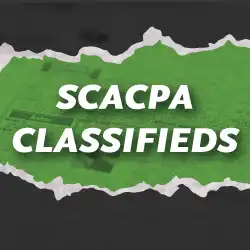Author: John J. Fenton, MBA, CEO, John J. Fenton Executive Coaching
This article originally appeared in the Summer 2025 issue of the South Carolina CPA Report
Let me take you back to a moment that changed everything for me.
I was 13 years old, standing at a crossroads. I had every reason to go down a destructive path—anger, chaos at home, trouble at school. But something inside me clicked. I made a decision. Not a resolution, not a passing thought—but a gut-level commitment to change the trajectory of my life. That single decision set me on a path through high school athletics, Division I football, and eventually to leadership roles in the C-suite and boardroom.
Why do I start there, when I’m talking to managing partners and CEOs of CPA firms?
Because I believe our most defining moments as leaders often come from places of pressure, pain, and perseverance.
And right now, whether you feel it or not, you’re likely standing at a crossroads of your own—one defined by complexity, competition, and constant change.
Let’s talk about what it takes to lead through it.
Obstacles Aren’t the Problem—Avoiding Them Is
We often treat obstacles as distractions. Something to fix or push past so we can “get back to work.” But the truth is, obstacles are the work of leadership.
As a football player, I didn’t just learn how to hit harder or run faster—I learned how to adapt. When things didn’t go as planned (and they rarely do in football), you had to pivot. Fast. In a single play, you had to read your environment, adjust to what the other side was doing, and trust your instincts. Sound familiar?
That’s what you do as a managing partner every day. You read the economic field, adapt to client expectations, anticipate regulatory change, and navigate internal friction. You’re not just running a firm. You’re reading the play before it happens. And that requires more than technical skill. It takes leadership agility.
But here’s the hard truth: you can’t build agility without adversity. You need the reps.
And you need the mindset that says, “This challenge isn’t in my way—it’s on my path.”
Leadership Begins with a Personal Decision
If you’re waiting for the economy, the board, or the next technology investment to “clear the path” for your leadership, you’re going to be waiting a long time.
You go first.
Leadership starts when you choose to grow—when you stop waiting for external permission and start taking internal responsibility.
That’s exactly what I did when I was 13. I didn’t have the language for it at the time, but I made a leadership decision. It wasn’t about status or success. It was about becoming the kind of person who could influence his own life, and eventually, the lives of others.
Now, when I coach senior executives and managing partners in CPA firms, we begin with the same question: Who do you need to become to lead at the next level?
Not what skills you need. Not what certifications you lack. Who do you need to become?
That one shift—from what to who—changes everything.
Motivation Moves the Room
There’s a myth in professional services that leadership is all about logic—planning, process, policy.
Don’t get me wrong, those things matter. But they’re not what moves people.
People are moved by your presence, your clarity, your energy, and—most of all—your motivation.
When I walked onto the football field, it wasn’t the strongest guy who always won. It was the one with the deepest “why.” The one who got back up. The one who made everyone around them better. Motivation is contagious—and in a leadership role, your energy sets the tone for the entire firm.
So ask yourself honestly: are you showing up with energy that inspires? Or are you simply surviving the day?
Because your team can feel the difference.
Vision Isn’t Fluff—It’s Fuel
One of the most misunderstood tools in leadership is vision. Not a vague aspirational statement on your firm’s website. I mean a real, felt, personal vision. The kind you can see in your mind. The kind that gets you out of bed with purpose.
Vision isn’t optional. It’s the engine of leadership.
And if you don’t have one—or if you’ve lost connection to it—you’ll find yourself constantly reacting to others instead of leading from the front.
Here’s what I tell my clients: Reclaim your ability to daydream. Yes, you heard that right. Because the ability to imagine a better future is a leader’s most underutilized asset. It’s where innovation, courage, and confidence are born.
If you can see it, you can build it. And if you can communicate it, others will help you build it, too.
The Strategic Power of Gratitude
I didn’t expect this when I started coaching, but one of the most powerful shifts I help leaders make is learning how to lead with acknowledgment.
Gratitude is not a soft skill. It’s a leadership accelerator.
In football, acknowledgment came in the form of a pat on the helmet or a shout from the sideline. It meant: “I see you. You matter.” In a CPA firm, it might be a short note, a meaningful conversation, or public recognition. Whatever the form, the impact is the same.
People want to be seen. And when they feel seen, they perform better. They commit more. They trust deeper.
When you consistently lead with acknowledgment, you create a culture that outperforms competitors every time—because people feel like part of something meaningful.
What This Means for You
The CPA profession is in flux. Technology is evolving fast. Hybrid work is here to stay. Clients expect more. Talent is harder to keep. Compliance is tighter. The playbook is being rewritten in real time.
If you’re reading this as a CEO or managing partner, you don’t need another task on your to-do list. What you need is a new way to think about leadership.
Let me offer this:
- Obstacles are your greatest training ground. Embrace them.
- Vision is your responsibility—not a luxury.
- Motivation, not just information, moves people.
- Gratitude is a performance strategy, not a soft skill.
- Leadership starts with a decision to grow—every single day.
I believe the future of the profession will be shaped not by those who know the most, but by those who lead the best. So the question is: what kind of leader do you want to be?
The obstacle in front of you? It’s not a red light—it’s your green light to lead.


